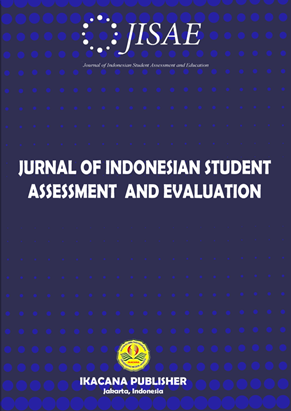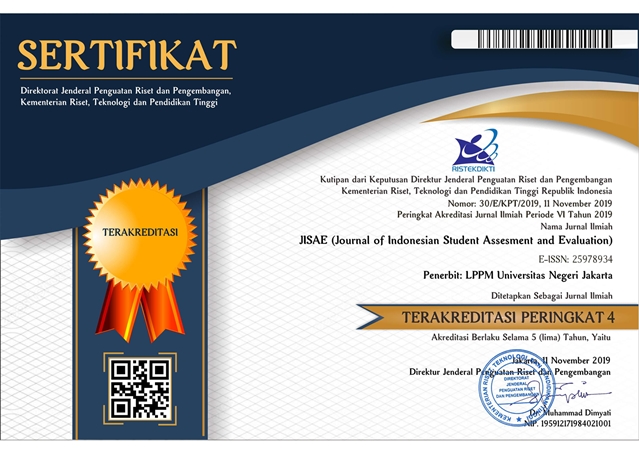INSTRUMENT DEVELOPMENT OF MATHEMATICS LEARNING OUTCOMES BY THE RASCH MODEL IN ELEMENTARY SCHOOL TO SUPPORT THE IMPLEMENTATION OF THE 2013 CURRICULUM
DOI:
https://doi.org/10.21009/jisae.v7i2.21830Keywords:
Item analysis, instrument development,students’s abilities.Abstract
This research aims to produce a grid design of mathematics learning outcomes instruments at the elementary school level in implementing the 2013 Curriculum. This research is expected to bring about the availability of grid design and supporting devices for the implementation of elementary school mathematics learning outcomes instruments. Output which obtained in this study is to help teachers in the development system of assessment that is sustainable, focussing on aspect of the analysis of the level of difficulty gains and the level of ability of students to use the model of Rasch. The sustainability implementation of Curriculum 2013, which may involve the heads of schools, teachers and students and the other relevant. In terms of the effectiveness, fostering sustainable used as the focus of a major system development as an instrument to validate test by the teacher and doing test try limited to the four schools in Palu. At the first stage, the design of instrument is carried out in the form of lattice and grain instruments, pieces of observation and questionnaires, test the construct, and the revision of the group of teachers and students of the school elementary grade IV. Result of test respondents (elementary School students in Palu) obtained that the point about the difficulty is the question number 26 (S26) with a value logit 2,08. While the matter of the most easily is the matter of number 3 (S3) with a value logit -1,84. Result output tables obtained information that does not exist grain matter which does not meet all the requirements fit (oufit MNSQ, outfit ZSTD and Pt Mean Corr) so that the point about including category fit or appropriate.











